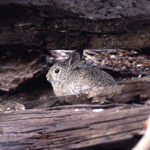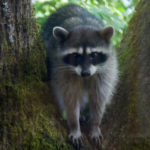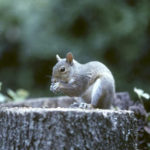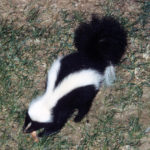 |
The opossum is the only native marsupial in the United States. While it can be found in all 100 North Carolina counties and adapts to all types of environments, it prefers deciduous forests with streams. One of the benefits this nocturnal mammal provides is that it can eat 1000s of ticks each week and also consumes snakes, mice, rats, cockroaches, slugs and snails. |
 |
The eastern cottontail is by far the best known and most widely distributed of the three species of rabbits in North Carolina. They are most plentiful in areas with a patchwork of farmland and early successional (young forest) habitat. However, rabbits also do well in habitats ranging from vacant lots in urban areas to extensive mature woodlands. |
 |
Raccoon
(Procyon lotor)
Raccoons are found statewide in North Carolina, but are most abundant in the Coastal and Piedmont regions. They are most abundant in habitats associated with water, such as bottomland forests, hardwood swamps and marshes. However they also often occur in urban areas, where they can scavenge for food.
|
 |
There are 7 species of squirrels native to North Carolina. Mast-bearing hardwood trees are important habit for all squirrels. Squirrels also use natural cavities in both live and dead trees for nesting and cover. |
 |
The striped skunk occupies most of North Carolina, although it is most common in the Mountain and Piedmont regions. Skunks live in areas with a mixture of woods, brush and open fields broken up by wooded ravines and rocky outcrops. They prefer harvested areas and pastures with good water sources.
|





